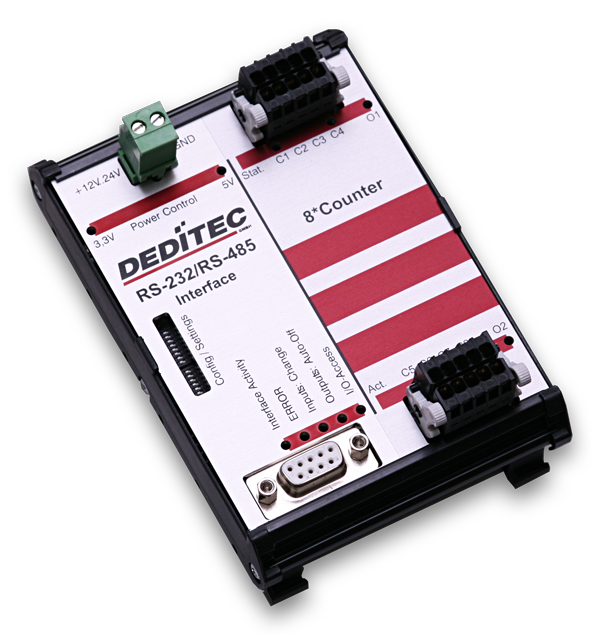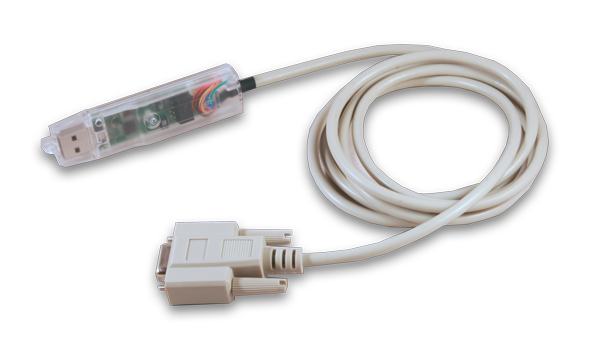The RO-SER-CNT8 module has 8 counter inputs with a max. frequency of 20 MHz and 2 pulse generator outputs with a max. frequency of 5 MHz. Additionally, input optocouplers provide a safe galvanic isolation between the counter module and your application. As interfaces the serial standards RS-232 or RS-485 are available. In addition, the existing USB 2.0 port can also be used.
- RS-232/RS-485 interface with galvanic isolation
- Open RS-232/485 protocol, plain text mode
- USB 2.0 interface with up to 480 Mbit
- 8/16 input counter each 48-bit (max. 20 MHz)
- 8 different input counter modes (4 main modes and 4 sub modes)
- 2/4 pulse generators per 48-bit (max. 5 MHz)

Frequency measurement and pulse generator
Counter inputs
This module can be used to count pulses, determine the period duration of input signals and perform frequency measurements. In addition, the galvanic isolation of the inputs allows the connection of signals with different potentials in relation to the counter module.
Pulse generator
The integrated pulse generator can output square wave signals up to 5MHz. In addition, certain counting events can be linked to this output.

LEDs
Each digital input and output has a separate LED that lights up when the signal state is active. Furthermore, the status of the operating voltage, the communication with the interface, error events or the occurrence of a timeout can be displayed.

Connectors
A screwless system from the manufacturer WAGO Kontakttechnik is used as the connector. The 1-wire female connectors are 100% protected against mismating and have an eject and locking mechanism. All conductor types up to 1.5mm² can be connected.

Software and control
Our DELIB driver library, which is included with the product, makes it easy to address the product via our API.
We offer support for the following programming languages:
- C
- C++
- C#
- VB
- VBA
- VB.Net
- Java
- Delphi
- LabVIEW
We offer support for the following operating systems:
- Windows 10 (32bit/64bit)
- Windows 8/8.1 (32bit/64bit)
- Windows 7 (32bit/64bit)
- Windows Vista (32bit/64bit)
- Windows XP (32bit/64bit)
- Windows Server 2003 (32bit/64bit)
- Windows 2000
- Linux
Corresponding programming examples can be found in the “Software” section of the products or are included on the driver CD.








































































Reviews
There are no reviews yet.